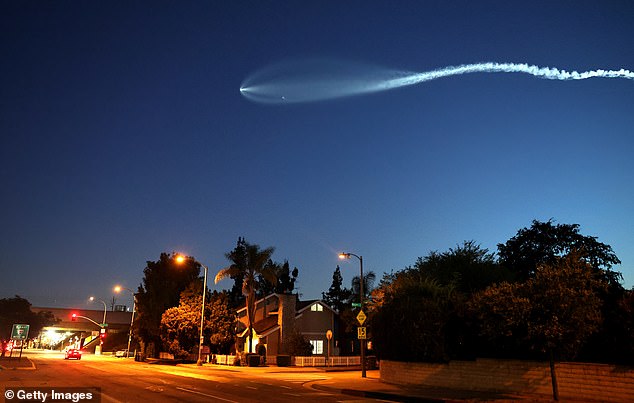
Scientists Decode Mysterious ‘Jellyfish UFO’ Spotted Over US Desert, Revealing Origin
Mysterious "Jellyfish" Lights Up California Sky—Turns Out to Be SpaceX Rocket
A bizarre jellyfish-shaped phenomenon lit up Southern California’s night sky on Monday, sparking widespread UFO speculation. However, the spectacle was no extraterrestrial visitor—it was the result of a SpaceX Falcon 9 rocket launch from Vandenberg Space Force Base.
The rocket, part of SpaceX’s Starlink 15-9 mission, lifted off at 11:36 PM ET (8:36 PM PT), deploying 20 new Starlink satellites into low Earth orbit. Minutes after launch, sunlight lingering just below the horizon illuminated the rocket’s exhaust plume, creating a glowing, jellyfish-like vapor cloud visible across the region.
Why Did It Look Like a Jellyfish?
The "jellyfish effect" occurs when a rocket’s exhaust—primarily water vapor and carbon dioxide—interacts with the atmosphere. As the rocket accelerates, the sudden pressure drop and temperature cooling at high altitudes cause the vapor to condense into ice crystals. Sunlight reflecting off these crystals transforms the plume into a shimmering, translucent shape resembling a celestial jellyfish.
Engineers refer to this as a "vapor cone" or "shock collar," a common but striking side effect of rocket launches around dawn or dusk. SpaceX’s lead avionics engineer, Cameron Gable, captured stunning images of the phenomenon as the rocket passed over Los Angeles County.
A Familiar Sight for Californians
Locals from the Mojave Desert to Los Angeles and as far south as Riverside (over 200 miles away) shared photos and videos on social media. While startling to some, this isn’t the first time SpaceX launches have generated such displays. In 2022, a Falcon 9 created a similar spectacle during another Starlink satellite deployment.
[Insert Image: Falcon 9 rocket exhaust creating jellyfish-shaped cloud over California]
Reusable Rockets Make History
The mission marked SpaceX’s 200th launch from Vandenberg’s Space Launch Complex 4 East. The Falcon 9’s first-stage booster successfully landed on a droneship in the Pacific Ocean, marking the 463rd recovery of a reusable SpaceX engine. Reusability is central to the company’s goal of cutting spaceflight costs.
[Insert Image: Falcon 9 booster landing on droneship]
More Starlink Satellites Join the Fleet
Monday’s launch added 20 satellites to SpaceX’s growing Starlink "constellation," which aims to expand global internet coverage. The company has conducted 75 launches in 2025 alone, predominantly for Starlink.
[Insert Image: Starlink satellites deploying in orbit]
Jellyfish Effect: A Cosmic Coincidence
While stunning, the phenomenon isn’t unique to SpaceX. Any rocket launch near sunrise or sunset can produce similar visuals. For example, in June 2024, a Phoenix resident spotted a Falcon 9’s jellyfish trail—despite being 500 miles from Vandenberg.
The effect depends on atmospheric conditions and the rocket’s trajectory. As exhaust gases rapidly expand in the upper atmosphere, shockwaves mold the vapor into intricate shapes visible hundreds of miles away.
[Insert Image: Previous jellyfish-like vapor trail from 2022 launch]
Aliens? Nope, Just Rocket Science
Though often mistaken for UFOs, these displays are a testament to human engineering. SpaceX’s frequent launches—coupled with sunset timing—make California skies a prime viewing spot for these otherworldly (but firmly terrestrial) light shows. Next time you see a jellyfish in the sky, check SpaceX’s launch schedule—it might just be another rocket heading to orbit.
[Insert Image: Side-by-side comparison of jellyfish effect and actual jellyfish]
TL;DR: A glowing "jellyfish" spotted over California was caused by a SpaceX rocket’s exhaust plume illuminated by sunset. The phenomenon, a mix of vapor condensation and sunlight, is a routine—but dazzling—byproduct of space launches.


